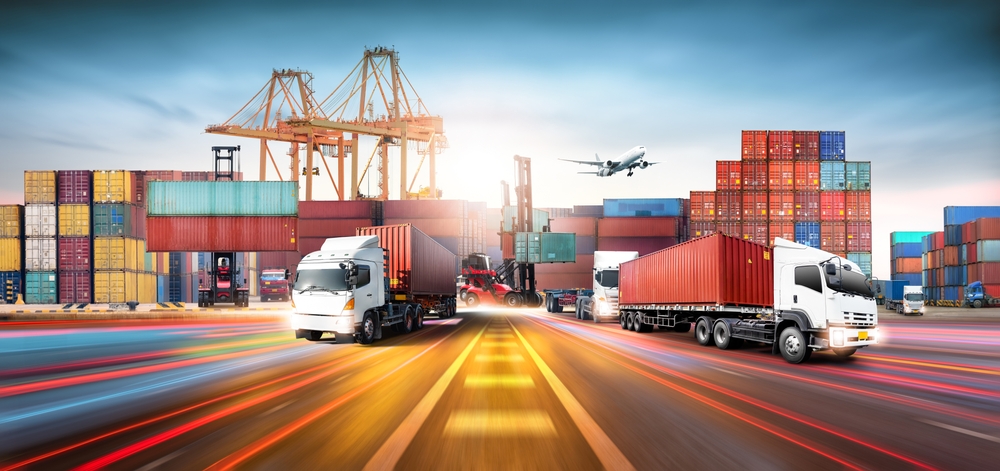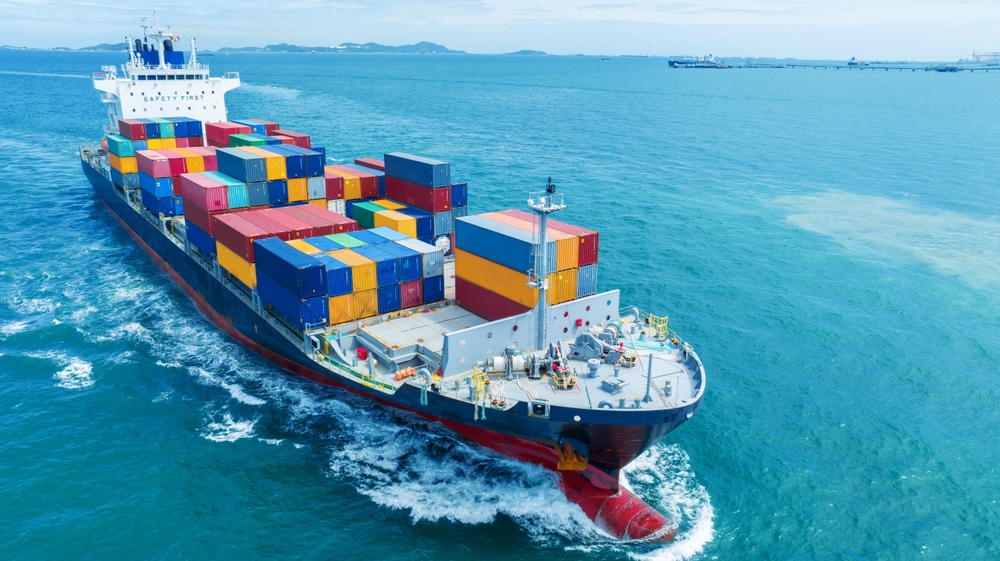How Is Digital Trade Making Global Commerce Easier in 2024/25
Digital trade is an inevitability in many aspects of day-to-day live, society as a whole, and whole industries, including global commerce.
In today’s guide, we will explore the question ‘How is digital trade making global commerce easier in 2024/2025.
Radius Warehouse and Logistic Services is here to provide you with all the information you need when it comes to the multiple areas of logistics that we provide, from sea, to air, to road freight solutions. Operating from the South West of England for over 20 years, our experience, and service is here for anyone who requires it.
The basics of digital trade
Digital trade refers to the buying and selling of goods and services over digital networks, such as the internet. It encompasses a wide range of activities, including online shopping, e-commerce, digital marketplaces, and digital downloads.
The key characteristics of digital trade include electronic transactions. Digital trade involves electronic transactions, using digital currencies or payment gateways, to facilitate the exchange of goods and services.
Secondly, there is the aspect of digital delivery. Products and services are often delivered digitally, either as downloads or through online platforms.
In addition, due to digital trade, there is now a global reach: Digital trade enables businesses to reach customers worldwide, transcending geographical boundaries. This is achieved through using data.
The downside of digital trade
Cybersecurity Threats
Intellectual Property Protection
Regulatory Challenges
Digital Divide
Competition
Job Displacement
Social and Cultural Impacts
How is digital trade making global commerce easier in 2024/2025?

Reduced Barriers to Entry
Digital platforms significantly reduce the costs associated with starting and running an online business. Businesses can operate globally with minimal overhead, making it easier for entrepreneurs and small businesses to participate in international trade.
This is because E-commerce platforms provide tools and services that streamline tasks such as inventory management, order fulfilment, and payment processing. This reduces the complexity and administrative burden of international trade.
Expanded Market Access
Digital platforms connect businesses with customers worldwide, allowing them to sell their products and services to a much larger audience than ever before. This is particularly beneficial for businesses in smaller markets or with limited physical presence.
With the addition of data and personalised adverts, this allows businesses to find their target market on a global scale. This works in hand with online marketplaces and search engines to provide businesses with greater visibility, making it easier for potential customers to discover and purchase their products.
Streamlined Cross-Border Transactions
E-commerce platforms offer a variety of secure payment options, including credit cards, digital wallets, and online banking. This simplifies the process of cross-border transactions and reduces the risk of fraud.
Digital trade platforms often have integrated customs clearance services, helping businesses navigate complex customs regulations and reduce delays.
Improved Communication and Collaboration
Digital tools enable businesses to communicate and collaborate with partners and customers in real-time, regardless of their location. This improves efficiency and facilitates faster decision-making.
In addition, language translation tools can help overcome language barriers and facilitate communication with international customers and suppliers.
Data-Driven Decision-Making
Digital platforms generate vast amounts of data that businesses can use to make informed decisions about their international operations. This includes insights into customer behaviour, market trends, and supply chain performance.
This is further facilitated by online tools and databases, making it easier for businesses to conduct market research and identify new opportunities in foreign markets via e-commerce platforms.
Increased Flexibility and Agility:
What causes global trade to increase?
An increase in global trade is generally a good sign for individuals, business, and economies, but what can help global trade increase?
-
Economic Growth: As economies grow, there is increased demand for goods and services, leading to higher imports and exports.
-
Technological Advancements: Improvements in transportation and communication technologies have made it easier and cheaper to trade goods and services across borders.
-
Reduced Trade Barriers: Lower tariffs, quotas, and other trade restrictions can encourage more trade between countries.
-
Globalisation: The increasing interconnectedness of the world economy, driven by factors like free trade agreements and the internet, has facilitated global trade.
-
Rising Income Levels: As people’s incomes rise, they have more disposable income to spend on goods and services, including imports.
-
Changing Consumer Preferences: Evolving tastes and preferences among consumers can drive demand for products from different countries.
-
Business Expansion: Companies seeking to expand their markets or reduce costs may choose to source goods and services from other countries.
-
Government Policies: Government policies that promote trade, such as free trade agreements and export incentives, can encourage businesses to engage in international trade.
Can global trade be decreased?
Yes. Global trade has the potential to decrease for a wide variety of reasons. Firstly, tariffs, quotas, and other trade restrictions can hinder the flow of goods and services across borders, increasing costs and reducing competitiveness.
Secondly, economic recessions or depressions can lead to a decline in demand for goods and services, reducing global trade. This is sometimes paired with political instability, including conflicts, wars, and changes in government policies, which can disrupt trade flows and create uncertainty for businesses.
Even if there is no conflict, tensions between countries can lead to trade disputes, sanctions, and other measures that restrict trade.
Disruptions in supply chains, such as natural disasters, labour shortages, or transportation issues, due to aforementioned tensions or conflicts, or other issues can affect the flow of goods and services.
The financial sector also impacts global trade. Significant fluctuations in exchange rates can make imports and exports more expensive, reducing trade competitiveness.
Increased protectionist policies, such as tariffs and subsidies, can harm global trade by favouring domestic producers over foreign competitors.
Ironically, even though technological advancements, can be beneficial for trade, it can also create challenges, such as cybersecurity threats and intellectual property disputes.
Is sea freight good for global commerce?
Yes. Sea freight is a cornerstone of global trade, offering several advantages that make it an essential mode of transportation. It is generally the most cost-effective option for transporting large quantities of goods over long distances, providing reliable schedules, and ensuring the safety and security of shipments.
Additionally, sea freight has a lower carbon footprint compared to air freight and offers global reach, connecting businesses worldwide. These factors make sea freight an indispensable mode of transportation for businesses involved in international trade.
Can digital trade affect sea freight?
Yes, digital trade can significantly affect sea freight in a variety of ways. The rise of e-commerce and online marketplaces has led to a surge in demand for international shipping, driving growth in sea freight volumes. Additionally, advancements in digital technologies have improved the efficiency and transparency of sea freight operations.
The growth of e-commerce has led to a significant increase in demand for international shipping, especially for smaller packages and parcels. This has driven growth in sea freight volumes, particularly for container shipping.
In addition, digital technologies such as blockchain and IoT (Internet of Things) are being used to improve the efficiency of sea freight operations. These technologies can help to track shipments in real-time, reduce paperwork, and streamline customs clearance processes.
Furthermore, digital platforms provide greater visibility into the shipping process, allowing shippers and consignees to track the location and status of their shipments in real-time. This can help to reduce delays and improve customer satisfaction.
Most importantly, digital technologies can help to reduce costs associated with sea freight, such as by streamlining paperwork and improving supply chain visibility.
Finally, the rise of digital trade has created new business models, such as cross-border e-commerce and drop-shipping, which rely heavily on sea freight to transport goods.
Where to find sea freight services

We at Radius Warehouse and Logistics Services encourage you to get in contact with us to see how our services can benefit you. Alternatively, you can get a quote from us directly, or visit our help and advice page for anything further you may need help with.
We hope that our guide has answered the question ‘How is digital trade making global commerce easier in 2024/2025.
With over 20 years of experience as an independent freight forwarder, you can expect quality service from us. In addition to being a member of BIFA, and trading under the standard trading terms of BIFA, We are also staffed by a dedicated core of enthusiastic and efficient professionals.
Our staff’s many years of experience in this industry welcomes your enquiries and hope you can join our loyal and superb client base.


